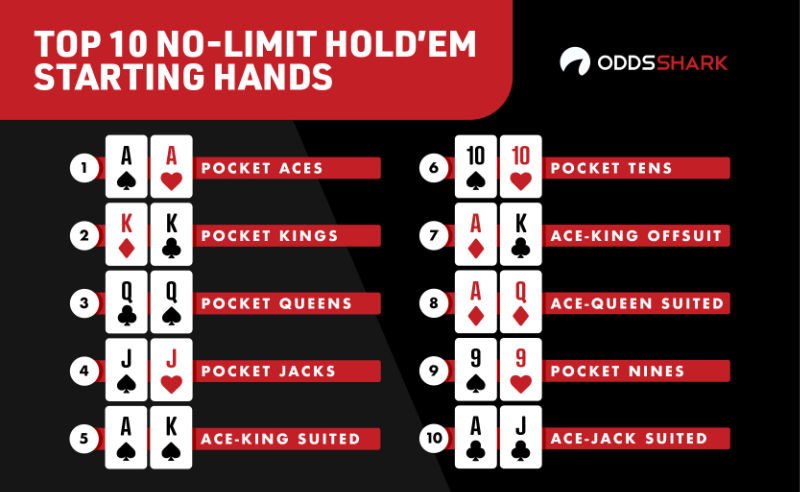The basic idea of poker is to play the strongest poker hands in early position, good hands in mid-position and a few more hands in the late (aka strongest) position. Over time, you'll naturally want to shake things up a bit. For now, stick with this and you'll never find yourself in trouble holding 7-2 off-suit. Making the decision whether to move forward with the hand you got is one of the most frequent ones to make during a game of Texas Hold’em. To succeed at this is not only important to know what hands to play or to fold, but also to know why it is done so, when you face a complex situation, you have a solid base to make the best decision. Ever since the early days of Texas holdem poker, players have attempted to analyze and organize the 169 possible two card starting hands found in the game. One traditional way of doing so involves running thousands upon thousands of simulations in which a particular holdem hand is played out against nine random opponent hands.

There are a lot of decisions to be made when you play Texas Hold’em at Bovada Poker. But once your stack gets down to a certain size, your decision is relatively easy: Push or fold. That’s because you don’t have enough chips left to apply leverage if you attempt a standard open-raise. This situation usually happens in No-Limit Hold’em tournaments, although it can happen at the cash tables as well.
Thanks to game theory and computing power, smart poker players have discovered that you can play “unexploitable” poker once you get in these push-fold situations. That means you can make your decisions almost robotically, knowing that the worst you can do in the long run is break even. But how short is short enough to use a push-fold strategy? That’s a matter for debate. Some players will wait until they’re down to 10 big blinds; others will start shoving when they get below 20 big blinds, and still, others will measure their stacks in terms of M instead of big blinds, taking into account the antes that have to be paid during each orbit around the table.

Best Opening Hands In Texas Holdem

Good Hands In Texas Holdem
Pushing and Folding for Poker Profit

Push-fold strategies also change depending on the number of players at the table. When it’s heads-up, you’re in the perfect poker game for using these strategies: It’s just you and your opponent, with no need to worry about things like ICM (Independent Chip Model). The more players you add to the table, the more complicated push-fold strategies get.
If you’re serious about winning No-Limit Hold’em poker tournaments, you can find push-fold strategies for heads-up play on the internet. These ranges cover stack sizes from 16 big blinds all the way down to 1.5BB; the shorter you get, the wider range you should be shoving. For example, with 15BB, you should be pushing King-Six offsuit or better, but once you get to 11BB, you should go ahead and push any hand with a King in it. At 7BB, that becomes any Queen.
While you’re figuring out your push-fold strategy, don’t forget that you can also call unexploitably when you’re being put all-in. If your opponent has you covered and shoves when you’re down to 12BB, your recommended calling range includes roughly the top 30% of hands in Hold’em, including all pocket pairs, suited Aces, and Broadway hands.